
Makoto Shinkai is a renowned Japanese director, and his films are now anticipated with just as much excitement as the works of the legendary Hayao Miyazaki. While there are some similarities between the two, their styles are completely different — Miyazaki favors classic animation and fantasy worlds, while Shinkai speaks more directly to modern audiences. Shinkai rose to fame for his romantic stories combined with breathtakingly realistic visuals. Kimi no Na wa is no exception — the director created a simple yet captivating sci-fi plot, skillfully woven with traditional elements of Japanese culture. In this article, we’ll uncover the secrets behind the film’s success and share plenty of interesting facts about Your Name.
What is Your Name about?
“So the braided cords that we make are the god’s art and represent the flow of time itself. They converge and take shape. They twist, tangle, sometimes unravel, break, and then connect again. Musubi — knotting. That’s time.”.
Taki Tachibana

This quote, spoken by the protagonist Taki Tachibana before the film’s culminating scene, beautifully captures its essence. At its heart, Kimi no Na wa is a touching love story that shows true love knows no boundaries — neither distance, time, nor even the loss of memories can prevent two lovers from finding each other. What may seem like a coincidence is actually fate, masterfully woven into the plot like threads on a loom.

One day, Taki wakes up and realizes he’s not in his own bed — but that’s nothing compared to the fact that he’s also not in his own body. He’s shocked to find himself in a rural home, in the body of a teenage girl. As his initial confusion turns into curiosity, he discovers that he’s seeing the world through the eyes of a young girl named Mitsuha, who lives in the quiet countryside town of Itomori, by a beautiful lake. For a boy raised in the bustling metropolis of Tokyo, the serene rural landscapes feel like a breath of fresh air – and he slowly begins to uncover the mystery behind this strange body swap.
At the same time, Mitsuha Miyamizu wakes up one day in a Tokyo apartment and realizes she’s in Taki’s body. She, too, has to adjust to this unexpected twist — tired of her quiet rural life, she enjoys strolling through the city, visiting cafés, and even helping Taki get a date with his coworker from his part-time job.

Taki and Mitsuha eventually realize what’s happening to them and begin communicating by leaving messages for each other in a shared notebook. They later start writing notes on each other’s phones — setting rules about what can and can’t be done, along with daily logs of their experiences. Over time, they grow closer and come to understand that they’re beginning to care deeply for one another. But just as their bond strengthens, the body-swapping suddenly stops, as if by some strange twist of fate.
Characters of Kimi no Na wa
1. Taki Tachibana

At first glance, Taki is just an ordinary high school student from Tokyo. He’s kind and determined, attends classes, has lunch with friends on the school rooftop, and works part-time at a restaurant. Like many of his coworkers, he’s interested in the beautiful waitress, Miki Okudera. When Mitsuha inhabits his body, people around him start noticing that his behavior becomes more feminine. Taki is passionate about architecture and enjoys sketching — this talent later helps him identify the town of Itomori, as he draws the landscapes he remembers from his time in Mitsuha’s body.
But things are far more complicated than they seem — Taki eventually discovers that when they were switching bodies, he was actually experiencing Mitsuha’s life three years in the past. Now, the situation takes a dramatic turn, and saving her becomes his mission.
2. Mitsuha Miyamizu
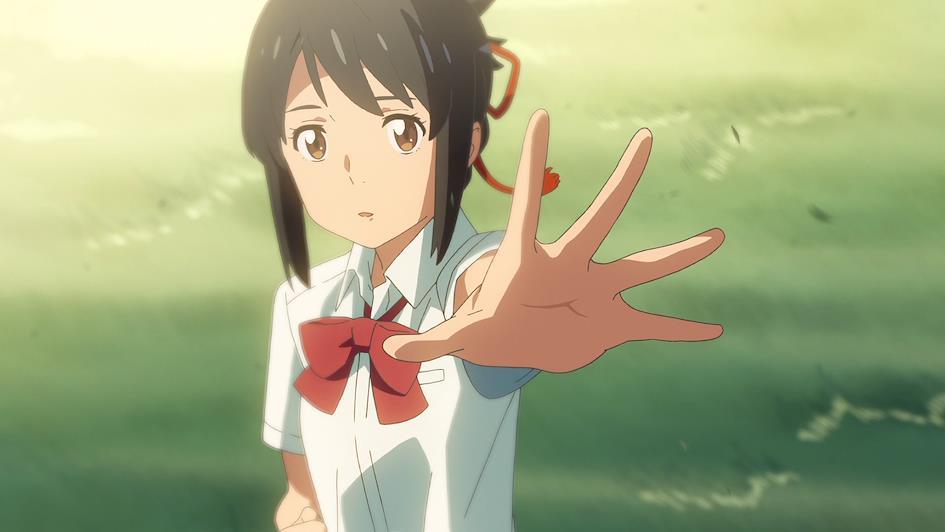
Mitsuha is a kind and beautiful girl from the rural town of Itomori. She lost her mother at a young age and was raised, along with her younger sister Yotsuha, by their grandmother while their strict father focused on his work — he’s the mayor of Itomori. As part of the Miyamizu family tradition, both sisters serve as miko, or shrine maidens, at the local Shinto shrine. Mitsuha, however, resents her small-town life and her duties, and dreams of escaping to the big city. The body swap with Taki gives her a chance to fulfill that dream and experience life in Tokyo.
Fun fact! Mitsuha’s hometown, Itomori, is a fictional place, but it closely resembles the real towns of Okaya and Suwa in Nagano Prefecture, located on opposite shores of Lake Suwa. The famous view of Itomori seen in the film mirrors the scenery from Tateishi Park in that area. Interestingly, Makoto Shinkai himself was born nearby, in the town of Koumi, and drew inspiration from the beautiful landscapes of his home region to bring one of his best films to life.

It goes without saying that the popularity of Your Name attracted many tourists — fans from all over began visiting not only the real-life inspirations for Itomori but also iconic locations from the film in Tokyo, such as the famous staircase featured on the Kimi no Na wa poster.
3. Yotsuha Miyamizu

Yotsuha is Mitsuha’s younger sister and the first to notice her strange behavior when Taki starts switching bodies with her. She helps Mitsuha with her shrine maiden duties and is also learning the traditional art of weaving from their grandmother.
4. Miki Okudera

A beautiful young woman and Taki’s coworker at the restaurant, Miki catches his interest early in the film. She works as a waitress while attending university. Later, she finds out that Taki has fallen in love with Mitsuha and helps him search for her.
5. Tsukasa Fujii

Tsukasa is Taki’s classmate and best friend, one of the first people he confides in about body-swapping. Along with Okudera, he joins Taki in the search for Itomori to help him find Mitsuha.
If you’d like to find your own Mitsuha — or collect figures of other Your Name characters – you can order them directly from Japan with the help of ZenMarket!
The Secret Behind the Film's Success

Your Name premiered in Japan on August 26, 2016, and immediately started breaking box office records, eventually earning over 382 million dollars worldwide. Shinkai came up with the idea for the film back in 2013 — initially, it was just a simple story about a girl from the countryside and a boy from Tokyo who had never met but might cross paths by chance. As he continued developing the plot, the director introduced the concept of body-swapping in dreams and other supernatural elements, which made the film both emotional and captivating. Shinkai was inspired by the 90s anime Ranma ½, in which the main character, Ranma Saotome, could transform into a girl named Ranko and back again.

Before Your Name, most of Makoto Shinkai’s films were bittersweet romantic stories where the characters, for various reasons, couldn’t end up together — like in 5 Centimeters per Second or The Garden of Words. In this sense, Your Name stands apart. Even Shinkai himself has said: “Compared to my previous works, I think Your Name turned out to be a much more energetic piece. There are comedic elements too, and overall, it has a brighter tone.”
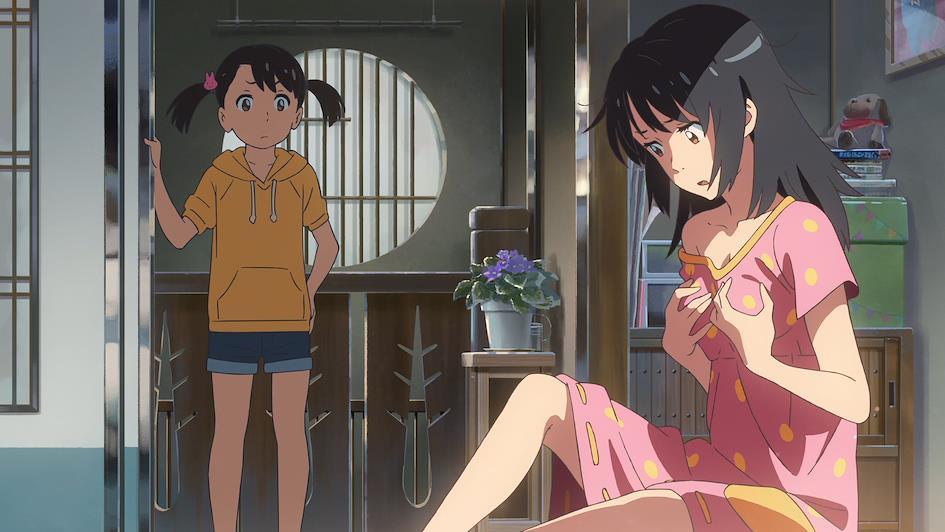
The humor in Your Name is one of the aspects that brings the film closer to mainstream anime series and helps to lighten the narrative in just the right way. The main characters humorously communicate and joke around much more than the characters in Shinkai’s earlier films. A special mention goes to Mitsuha’s younger sister, who hilariously reacts to Taki’s unusual behavior while inhabiting her sister’s body.
Despite these comedic elements, the film still leaves behind the bittersweet yet heartwarming feelings typical of Shinkai’s storytelling. However, unlike his earlier works, Your Name offers a glimmer of hope for a happy ending. And as the story unfolds, you can’t help but root for Taki and Mitsuha to overcome all odds and find their way to each other.
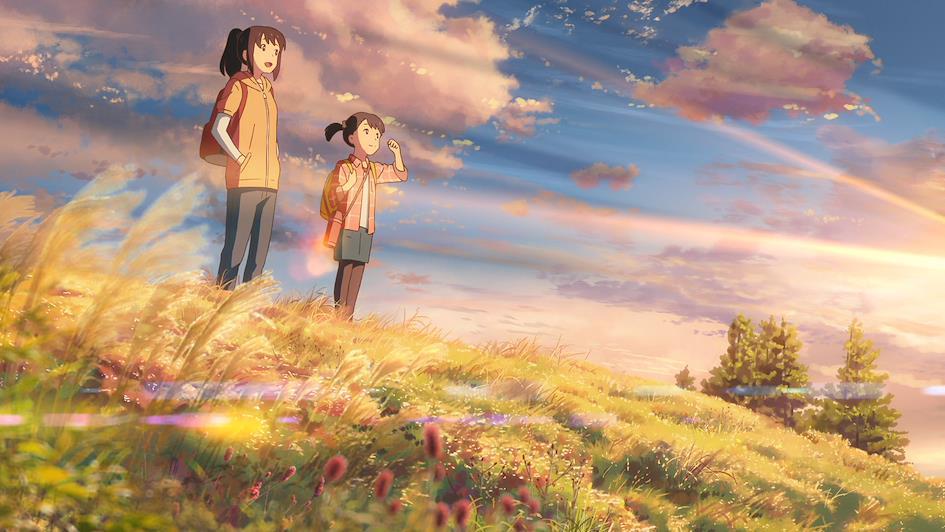
Shinkai’s works are not just about romance — they’re also visual masterpieces. Kimi no Na wa is no exception. The film delights viewers with atmospheric countryside landscapes and stunning shots of Tokyo’s streets.
And of course, no Shinkai film would be complete without his incredibly detailed and photorealistic depiction of rain — both Kotonoha no Niwa and Kimi no Na wa showcase rain in a truly breathtaking way.
In his next film, Tenki no Ko (Weathering with You), the director took it even further — flooding Tokyo with nonstop rain! This glossy, polished animation style and Shinkai’s fascination with rain and glistening surfaces have become his unmistakable trademark.
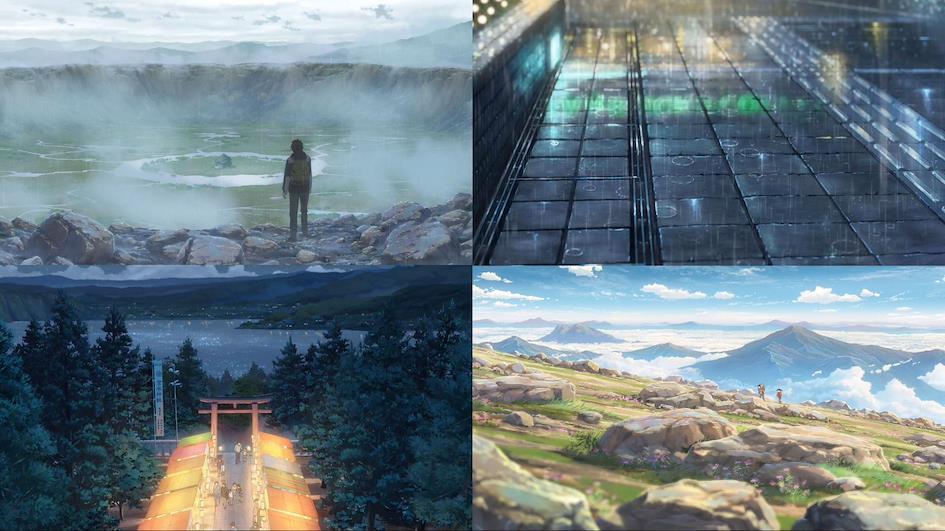
The bustling streets of Tokyo, a majestic mountaintop shrine, lush green nature, the unique atmosphere of a traditional Japanese festival, or the soft glow of an orange sunset — Shinkai has the ability to turn even the simplest moment into a work of art. The film’s direction is equally masterful — he fully immerses the viewer in the world of Kimi no Na wa, making you feel emotionally connected to the characters and experience everything through their eyes. Shinkai shared that during the film’s production, he was deeply engaged in watching the American series Breaking Bad, and despite the differences in genre, he drew inspiration from its cinematic techniques.
Shinkai also emphasizes that one of the main ideas behind the film is that people don’t necessarily have to meet in person to understand and fall in love with one another. While the body-swapping fantasy of Kimi no Na wa isn’t possible in real life, many people – according to the director — build deep and meaningful connections online. In fact, he mentioned that several of his acquaintances have gotten married after long-term online communication.
Considering all of this, the success of Kimi no Na wa is a natural result of hard work, talent, and attention to detail. If you're also in love with this film, don’t miss the chance to shop Kimi no Na wa merchandise directly from Japan with ZenMarket!
Japanese Culture in Kimi no Na wa
“It's twilight when it's neither day nor night. When the world blurs and one might encounter something not human.”
Yukari Yukino

To explain the fantastical background in Your Name, Makoto Shinkai came up with a beautiful legend, blending fictional storytelling with authentic Japanese traditions and subtle nuances of classical Japanese language that are little known to the general public.
1. Linguistic nuances

A great example of this is the classroom scene in Mitsuha’s school, where the teacher explains old Japanese words. This moment isn’t just there to present some fun linguistic trivia — it plays a key role in connecting the supernatural foundation of the film’s story.
Did you know? The teacher in this scene is Yukari Yukino, the main character from another well-known Shinkai film, Kotonoha no Niwa (The Garden of Words). Featuring characters from previous films as cameos is one of Shinkai’s signature touches. In fact, Mitsuha and Taki themselves appear later as cameos in his next film, Weathering With You!
The teacher first introduces Mitsuha and her classmates to the old word tasokare, which means “Who are you?” Over time, it evolved into the modern phrase tasogare-doki, meaning "twilight." She also writes other similar phrases on the board: karetaso-doki, kawatare-doki, and kataware-doki. All of them originally meant “the time when you ask who someone is,” because in the past people would say these phrases at dusk when it became difficult to recognize faces in the fading light. Eventually, these phrases lost their original meaning and simply came to refer to twilight - the time between day and night. They all echo the question “Omae wa dare da?” (“Who are you?”) - the message Taki once scribbled in Mitsuha’s notebook after waking up in her body, which she later finds during the same lesson.
Fun fact! When the teacher says kataware-doki, some students correct her, noting that the proper phrase should be kawatare-doki (彼は誰時). The teacher responds that it’s likely a local dialect, as people in that region tend to say it that way. Shinkai himself grew up in the area that inspired Mitsuha’s hometown — so this linguistic detail is a subtle nod to his roots. Later in the film, the characters themselves use the “incorrect” version, kataware-doki, during the emotional twilight scene when they finally meet — despite being three years apart in time.
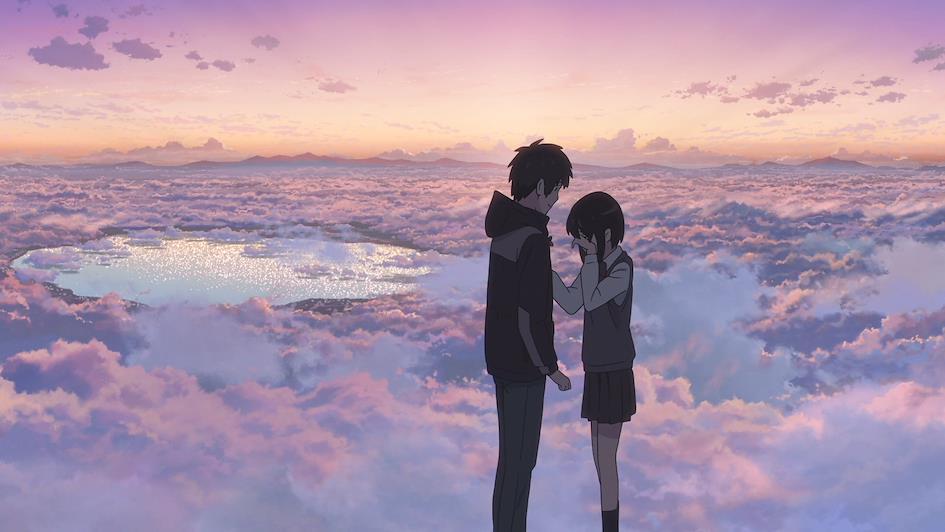
Kataware-doki symbolizes the moment when day turns into night and the boundaries between worlds become blurred. Thanks to this mystical moment, the two protagonists were able to meet — despite being in the same place, separated by three years. It’s also the name of one of the most enchanting tracks from the film’s soundtrack by the Japanese band RADWIMPS is also titled Kataware Doki. As many viewers have pointed out, the song evokes a bittersweet longing — like missing someone you've never even met. It perfectly captures the emotional essence of the film, allowing the audience to truly feel what Taki and Mitsuha felt. Even after forgetting each other’s names, their bond was so powerful that they kept searching for a way to reunite.
2. Kuchikamizake

Kuchikamizake (口噛み酒), or “chewed sake,” is an ancient sake-making tradition in which rice is chewed and then spat out to begin fermentation, triggered by the enzymes in human saliva. In the film, Mitsuha and her younger sister, as shrine maidens (miko), perform a ceremonial dance and then chew the rice before spitting it into a small box to create kuchikamizake. This ritual is believed to be a way for the shrine maiden to offer a part of herself, and the kuchikamizake is then presented to the gods at a sacred altar in the mountains. This practice once existed in real-life Japan and was performed in certain Shinto shrines.

Shinkai included this scene in the film to add a unique touch, as well as to subtly portray an indirect kiss between the main characters — when Taki finds the kuchikamizake offered by Mitsuha at the altar and drinks it in order to return to the past and save her.
3. Kumihimo

Kumihimo (組紐) is a traditional Japanese art of braiding cords from threads, which Mitsuha and her younger sister learn from their grandmother. The women in Mitsuha’s family have practiced weaving for generations, and the braided cords - referred to as musubi in the film — symbolize the distortion and flow of time in their village. Both Mitsuha’s mother and grandmother also experienced body-swapping in their dreams in the past, but unlike Mitsuha, they never met the other person in real life and eventually forgot about it.
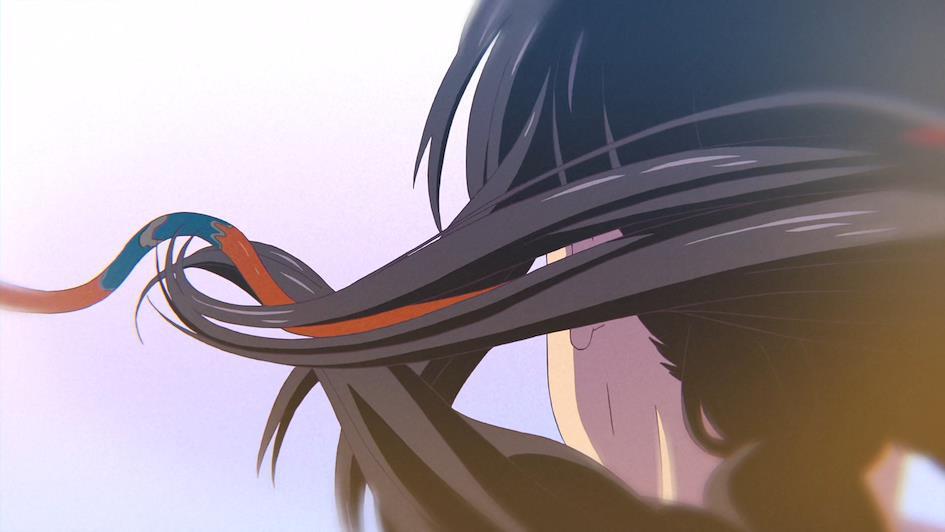
The hair cord that Mitsuha gives to Taki when she visits Tokyo is made using this very braiding technique. Taki wears it as a bracelet on his wrist, and it might be one of the reasons he is able to find and save Mitsuha across time and space. In Kimi no Na wa, kumihimo and musubi symbolize the concept that ties together the film’s supernatural elements — the idea that time, like a thread, can twist, tangle, and loop in unexpected ways.
In one of his interviews, Makoto Shinkai also referred to the kumihimo cord made by Mitsuha as “a metaphor representing the flow of time.” The split comet in the film further symbolizes the two timelines — Mitsuha in the village three years in the past, and Taki in Tokyo three years later.
Conclusion
Kimi no Na wa is a remarkable romantic film that resonated strongly with mainstream audiences thanks to its unique concept, stunning visuals, and deeply moving love story. It has a bit of everything, all executed at the highest level. That’s precisely the secret behind the film’s success. Shinkai’s signature directing style has become a winning formula in itself. His passionate approach - always aiming to make each new film better than the last — is what turned Your Name into a beloved masterpiece cherished by millions around the world. If this film touches your heart too, you can order its special Blu-ray edition with various bonus items — let’s enjoy the magic of Japanese animation together!